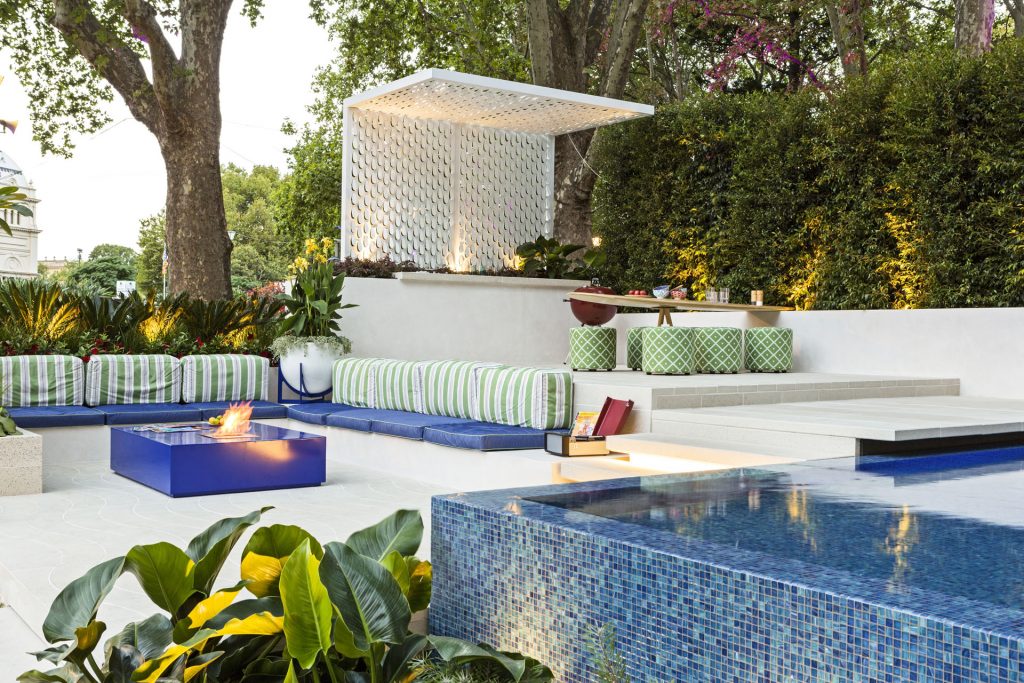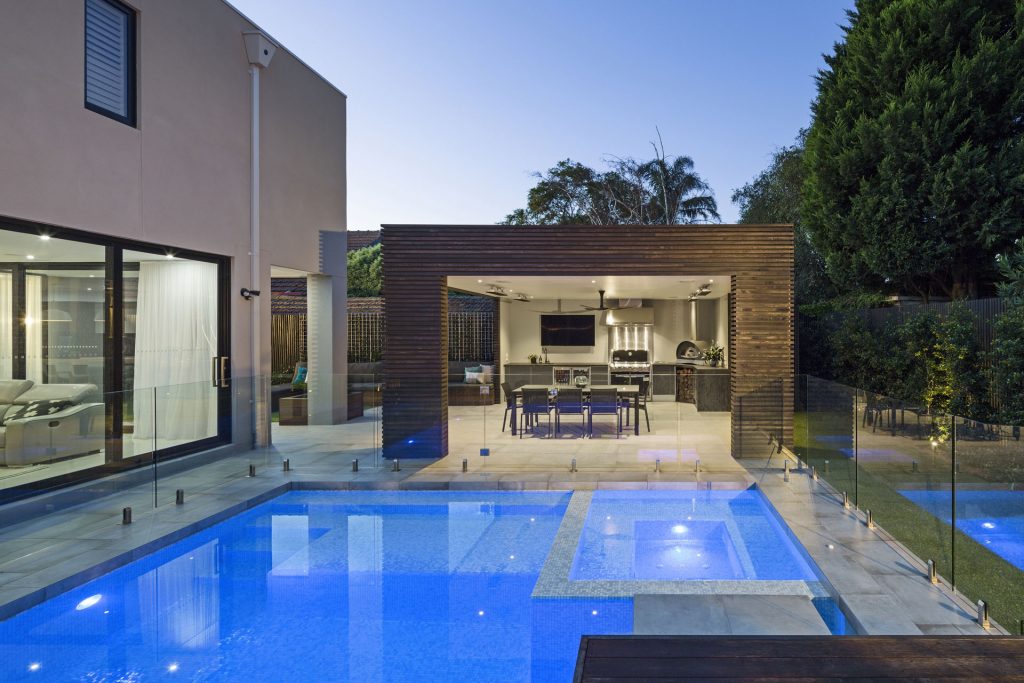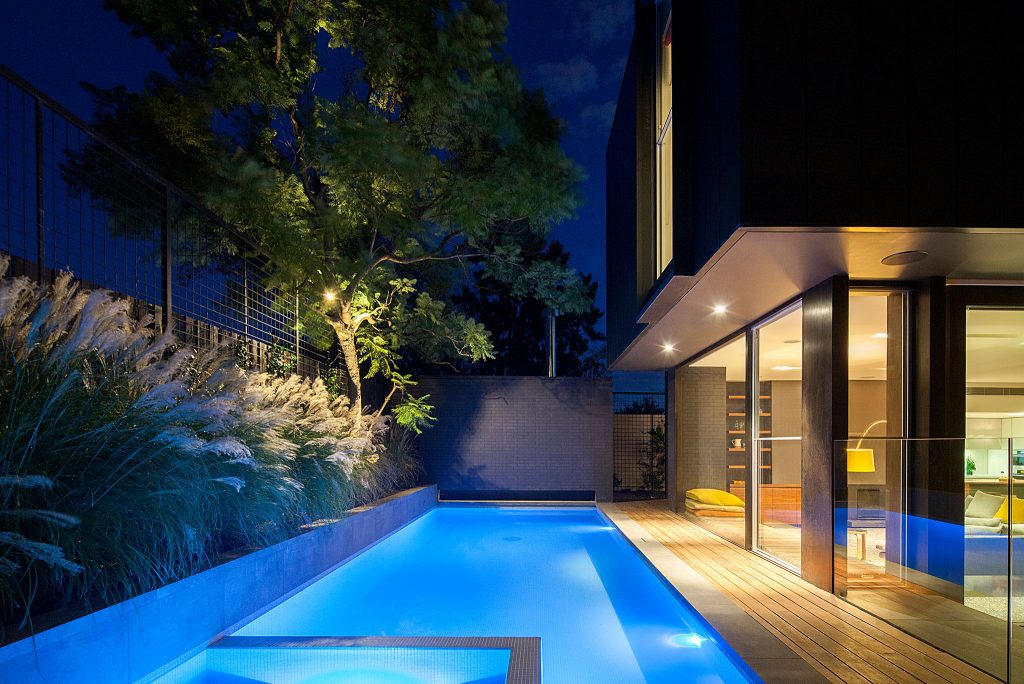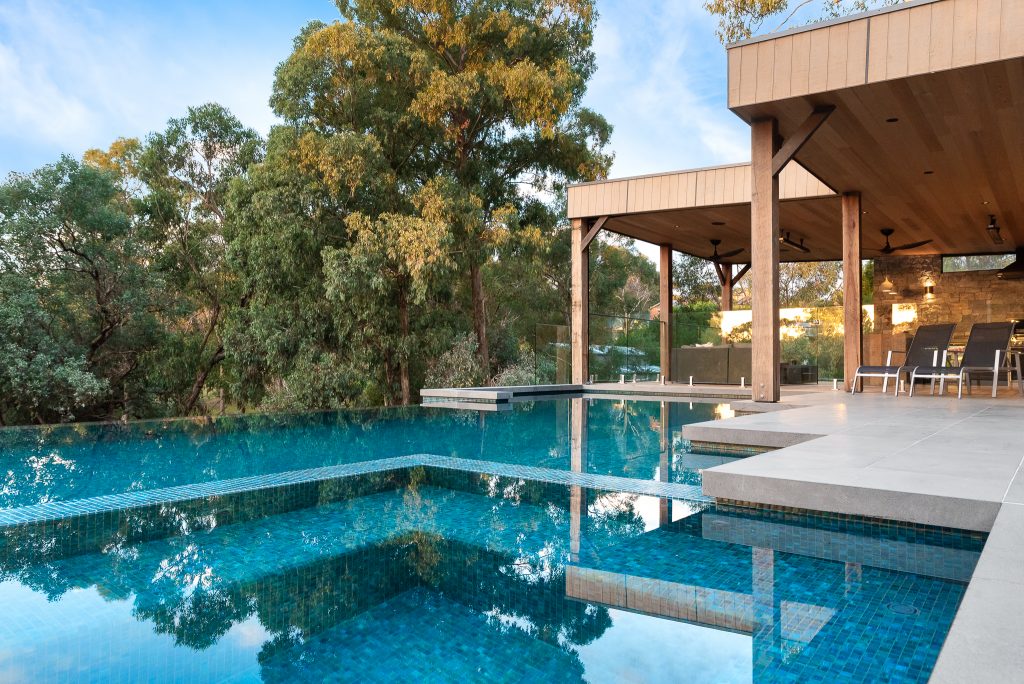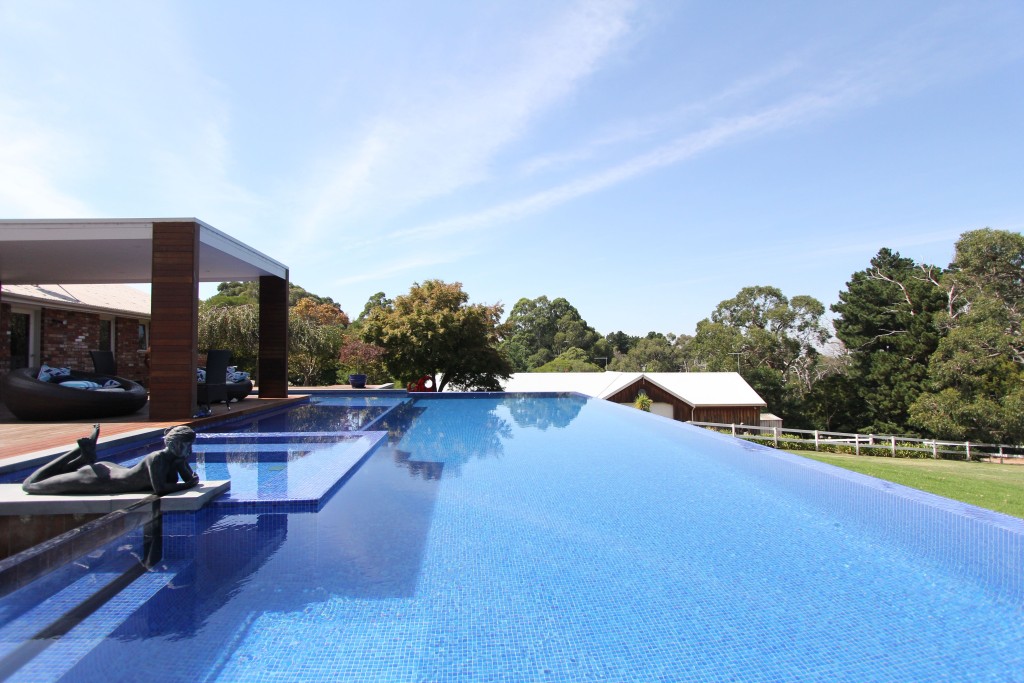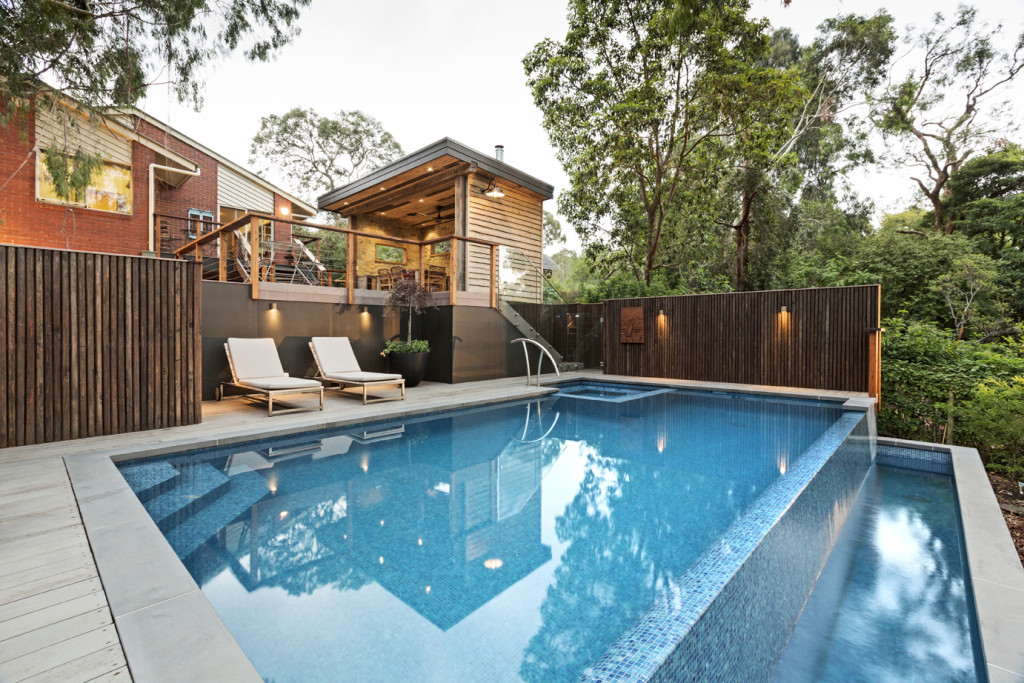Concrete Swimming Pools
The Modern Pool
Pools date back as far as Roman times, but it is only relatively recently that swimming pools have become affordable enough that personal swimming pools could be installed in a backyard and enjoyed in private. An in-ground is a true luxury, and can be an architectural statement as well as a practical source of fun and enjoyment.
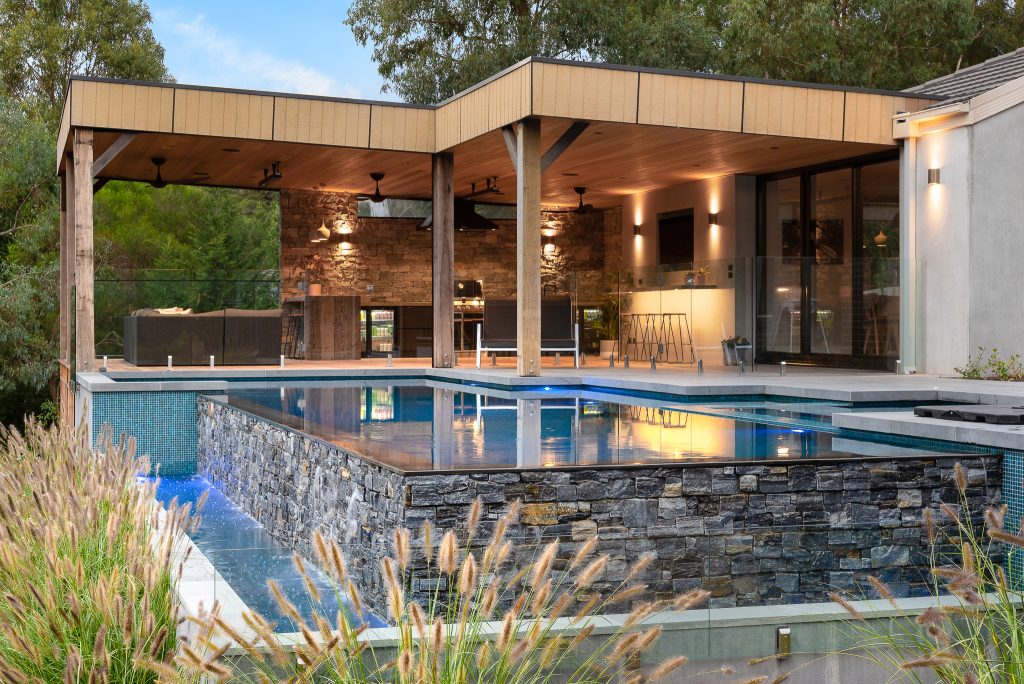
A Concrete Advantage
There are many reasons people choose concrete swimming pools today. Firstly, concrete swimming pools are extremely customisable. Although prefab fibreglass or vinyl swimming pools may be cheaper, they only come in set sizes and designs. Concrete swimming pools can be made to fit any property, they can be made to any length, width, depth and even shape that the property owner desires.
Concrete swimming pools are the most elegant looking of the swimming pools on the market today.
Not only is the design fully customisable, but concrete swimming pools are also very strong. Whether it is an in-ground swimming pool or free-standing swimming pool that you wish to install, concrete swimming pools are the strongest construction available. Modern methods for creating concrete swimming pools utilise the advances in concrete strength technology coupled with strong steel lattice framework to ensure that the concrete swimming pool structure is resilient to both compressive impact force as well as tensile and torsional forces. This means that the concrete swimming pool is able to bend and the concrete can flex with the steel holding the structure together, so it is unlikely to crack or fail under the weight of the water or with the movement of the environment around it, particularly in-ground swimming pools experiencing seismic activity.
King of Pools
Concrete swimming pools are the most elegant looking of the swimming pools on the market today. Vinyl or fibreglass swimming pools are undoubtedly cheaper to construct, however none of the other styles of swimming pool encourage the same level of awe and envy that a classic, well-constructed, in-ground swimming pool brings. A beautiful in-ground concrete swimming pool displays taste and prosperity. When designed to properly compliment the property and yard that it accompanies, surveys show that an in-ground concrete swimming pool can add up to one hundred thousand dollars to the value of your property.
Building a Concrete Pool
When considering a concrete swimming pool for your property, there are some things that need to be considered and remembered. Firstly, it is important to understand the construction timeline, assuming the design and position have been settled on, next the area must be prepared, meaning heavy machinery is brought to the site and to pool area is dug from the earth. After the area has been prepared, concrete pool plumbing must be installed for the circulation and filtration of the swimming pool water, in some cases this has to be completed in two stages both before and after the wire strengthening frame is installed. There is also the time taken to manufacture the wire strengthening frame and install it before the concrete shell is sprayed into place. Concrete is made from a calculated mixture of water, sand, cement and stone or gravel, once this is mixed and sprayed into place, it has to be allowed to cure, and this can take up to a month.
Total construction time for a concrete swimming pool can range from 2-3 months
Once the concrete has cured to its final hardness, the rest of the construction can be completed. Firstly, concrete swimming pools have a layer of tiles which run all the way around the top perimeter of the swimming pool, then paving or decking is usually constructed around the swimming pool before the finishing touches are put into place, such as fencing, plants, gazebos, etc. Once this is all completed, the builders then apply a plaster mixture to the entire internal surface of the swimming pool to ensure a clean, smooth, flat finish.
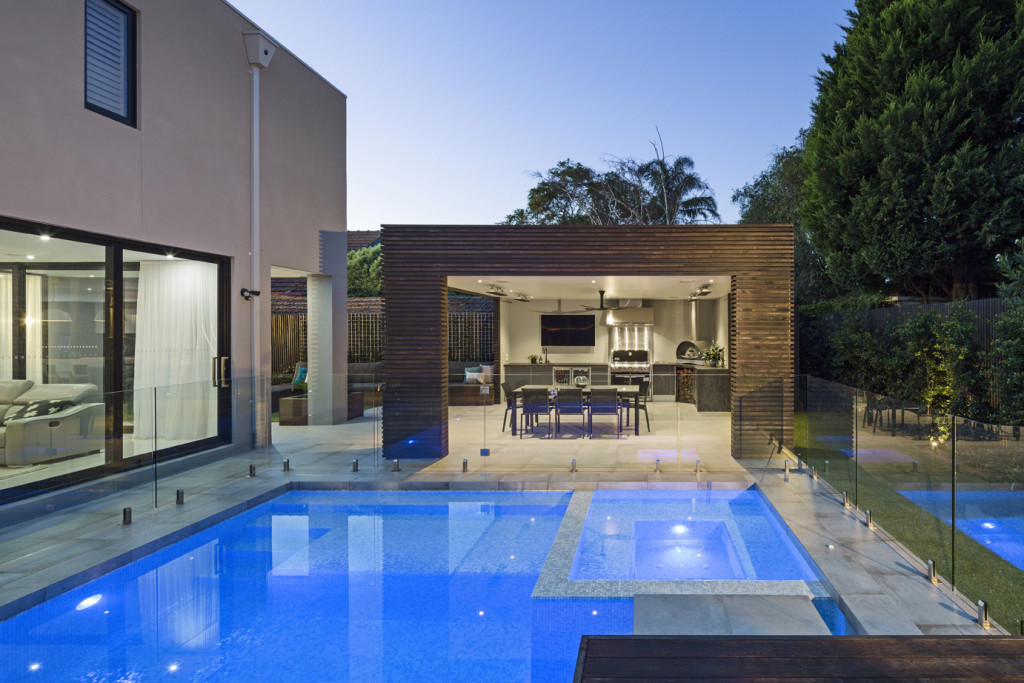
How Long Do Concrete Pools take to Build?
From beginning to finish the total construction time for a concrete swimming pool can range from 2-3 months, whereas prefabricated fibreglass or vinyl lined swimming pools can be installed and finished within a matter of weeks.
Concrete Pool Maintenance
Once of the most important components of concrete is cement, cement contains around 65% Calcium Oxide or lime, this is extremely important to the overall strength of the concrete however it is quite alkaline. Fresh concrete can have a pH of as high as 12.5. This means that over time, concrete swimming pools slowly increase in alkalinity and concrete swimming pool owners need to test their swimming pool water frequently and add acidity regulators regularly to ensure the correct pH balance of the swimming pool water is maintained.
Although concrete swimming pools may require more electricity to heat up initially (if you have a heated concrete swimming pool) the thick concrete walls act as much more efficient insulator than the thin walls of fibreglass or vinyl lined swimming pools meaning you’ll save energy in the long run if you keep the concrete swimming pool at a constant temperature.
There are pros and cons to every type of swimming pool, and although concrete swimming pools can require more cleaning and maintenance they also have a much higher visual appeal and sense of class and professionalism than prefabricated fibreglass or vinyl lined swimming pools and can add a great deal of value to your property.

